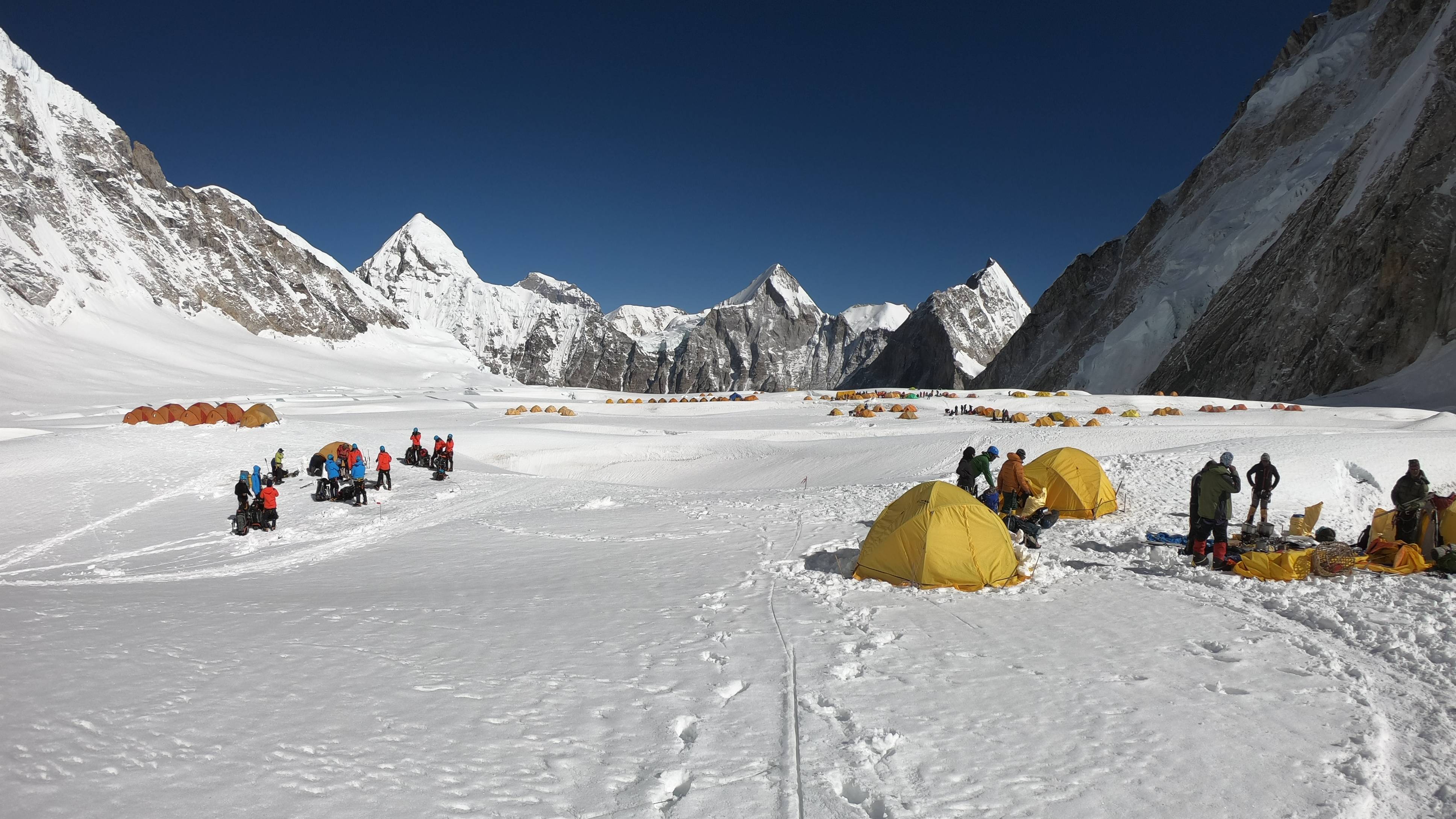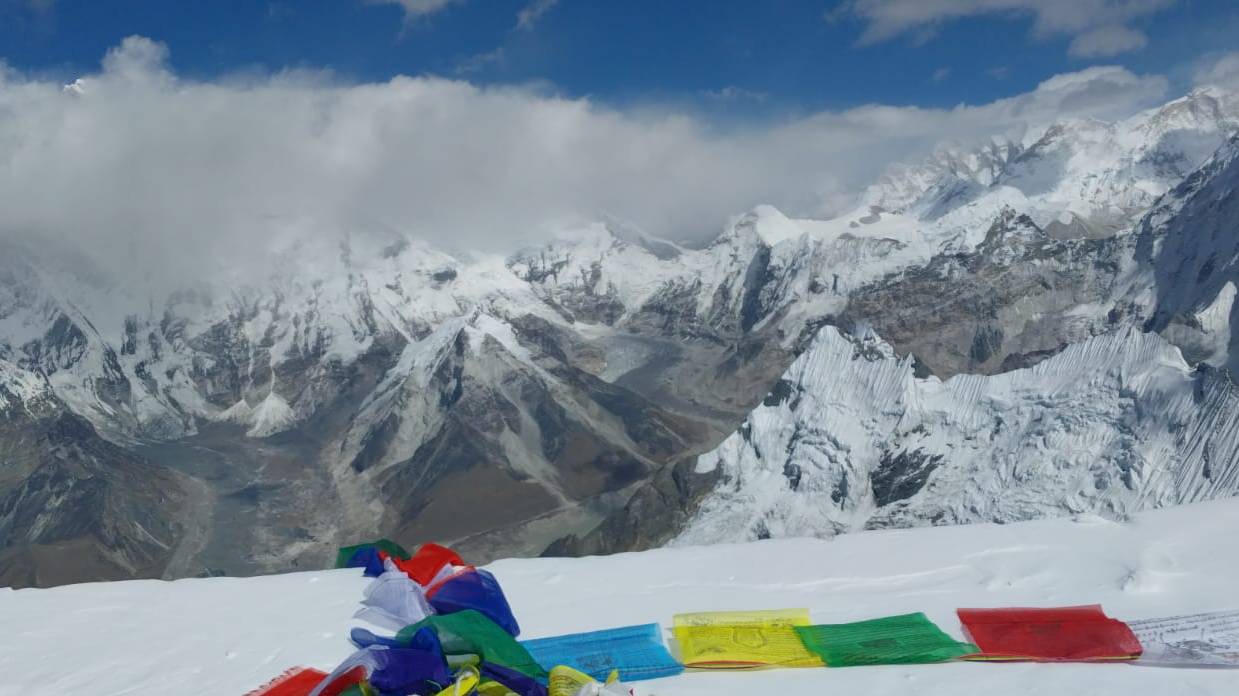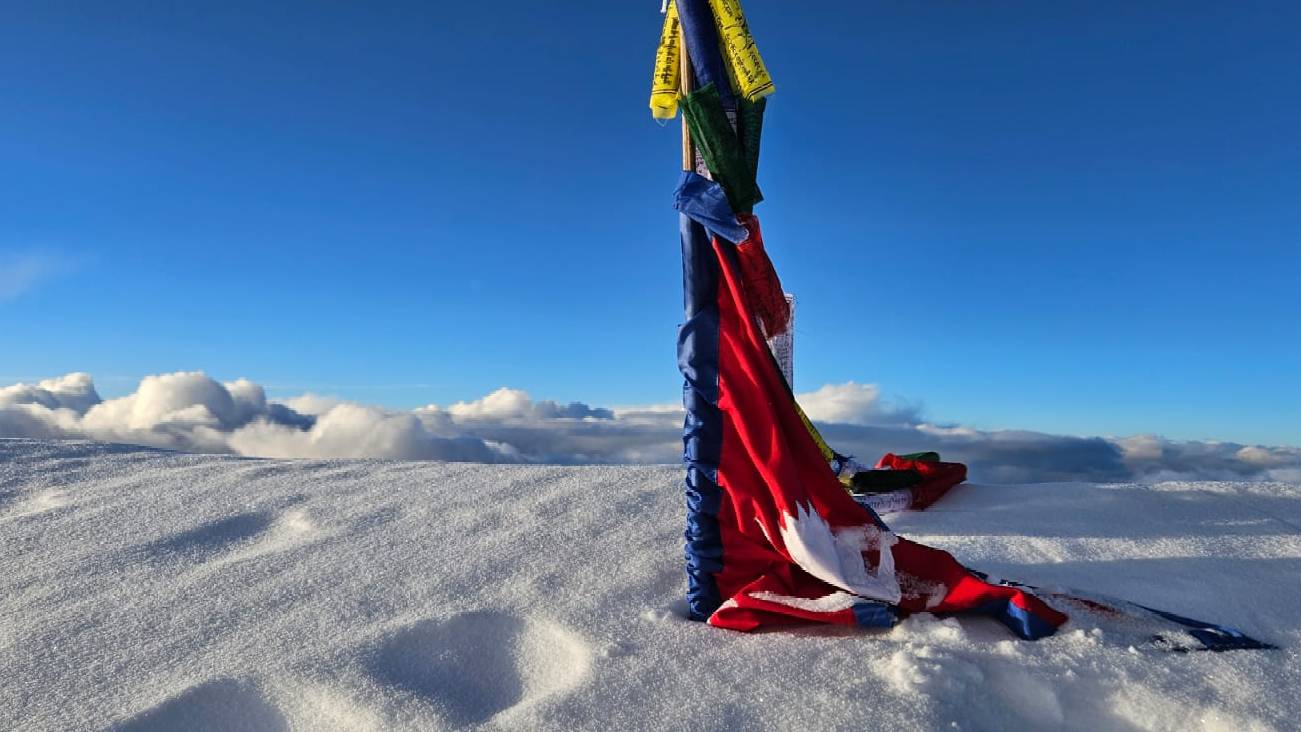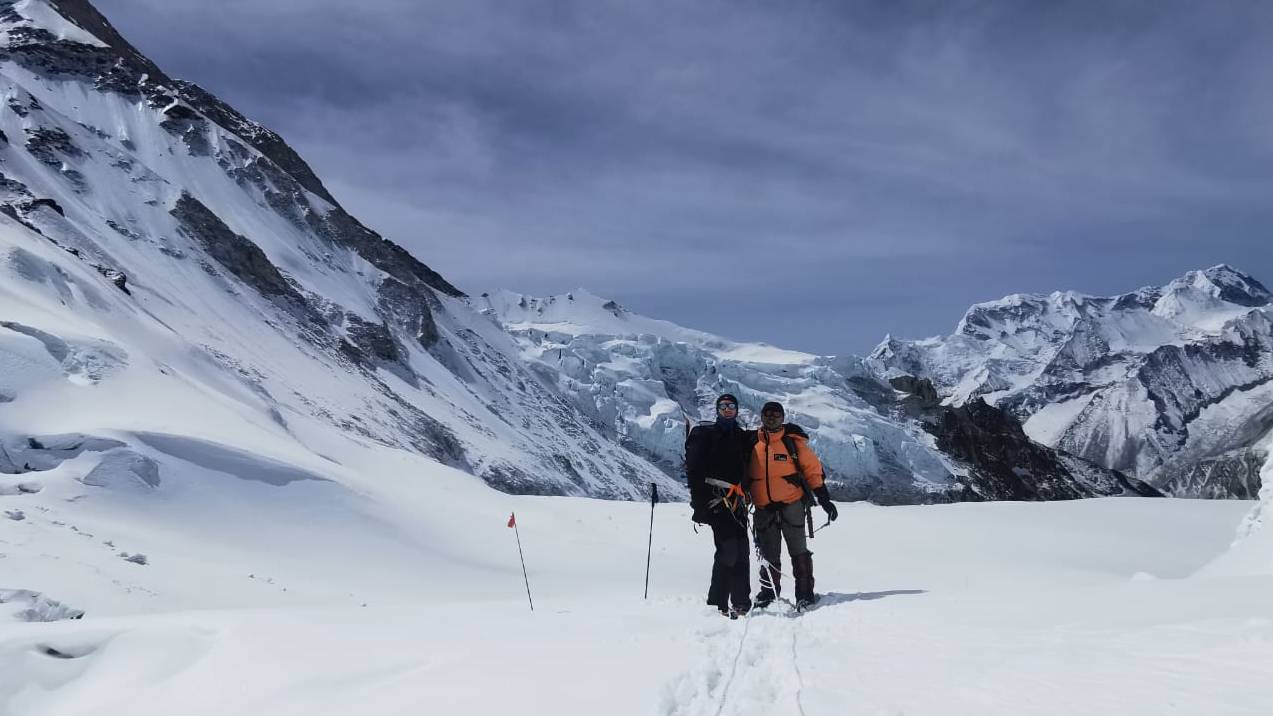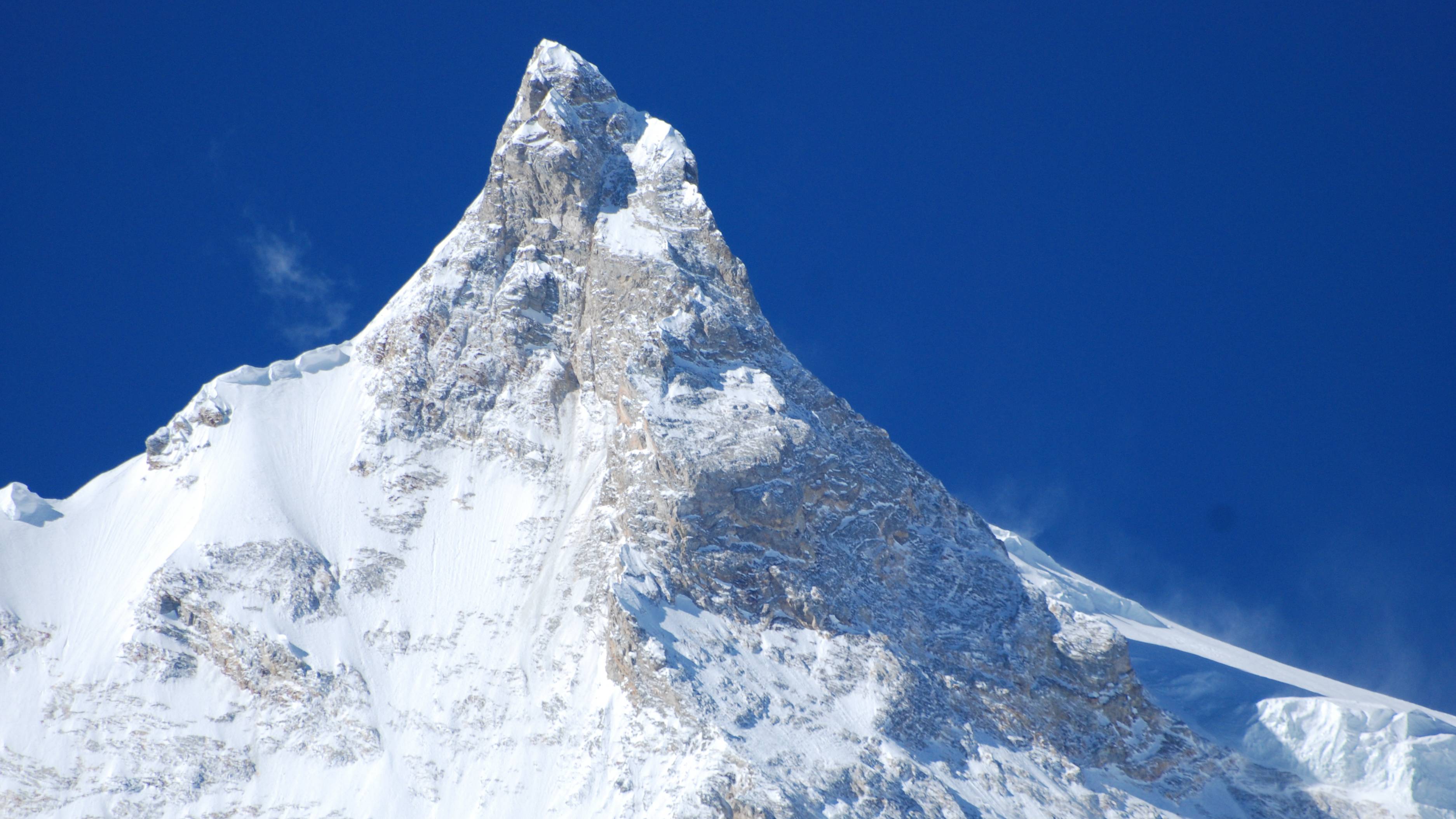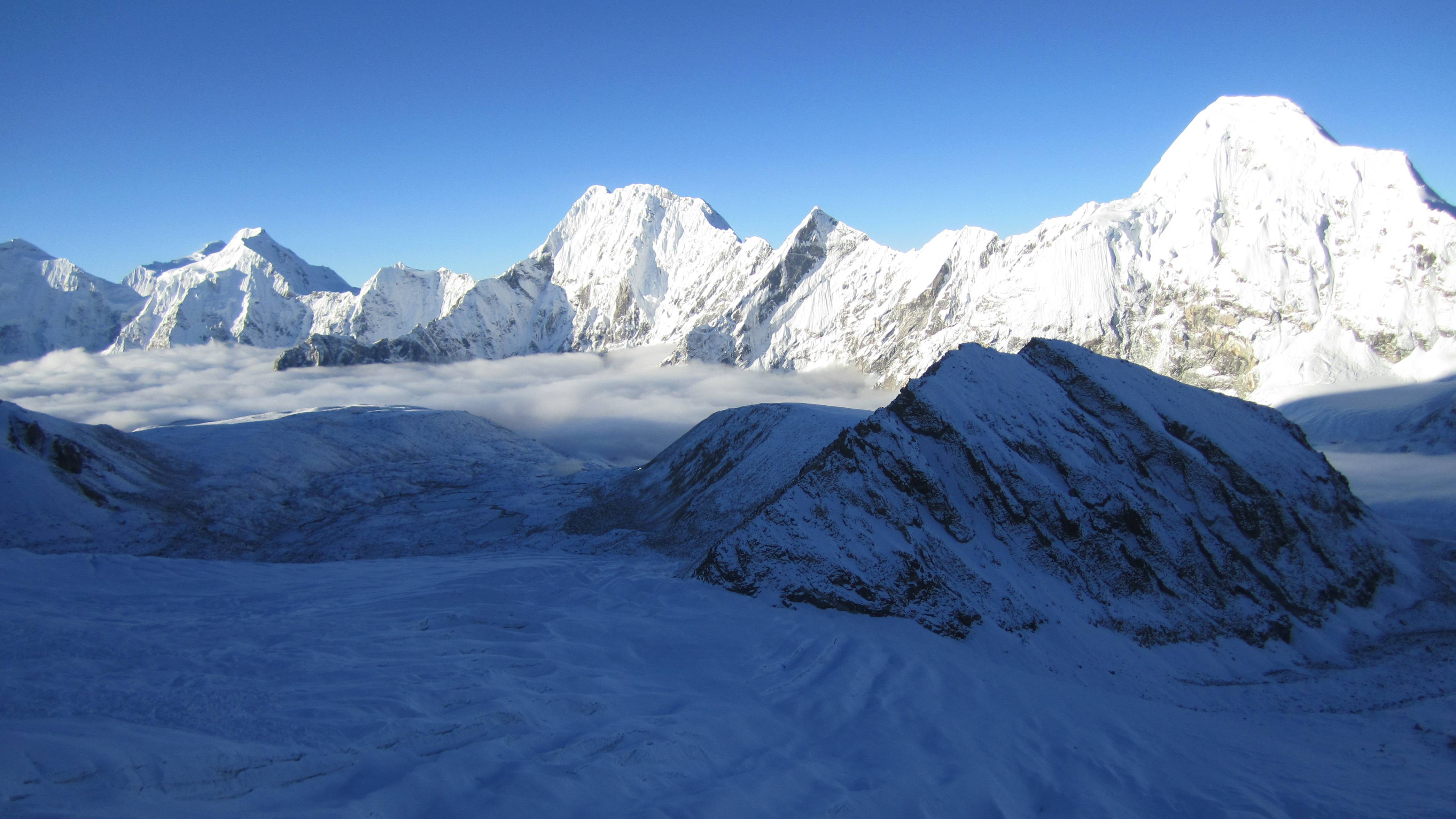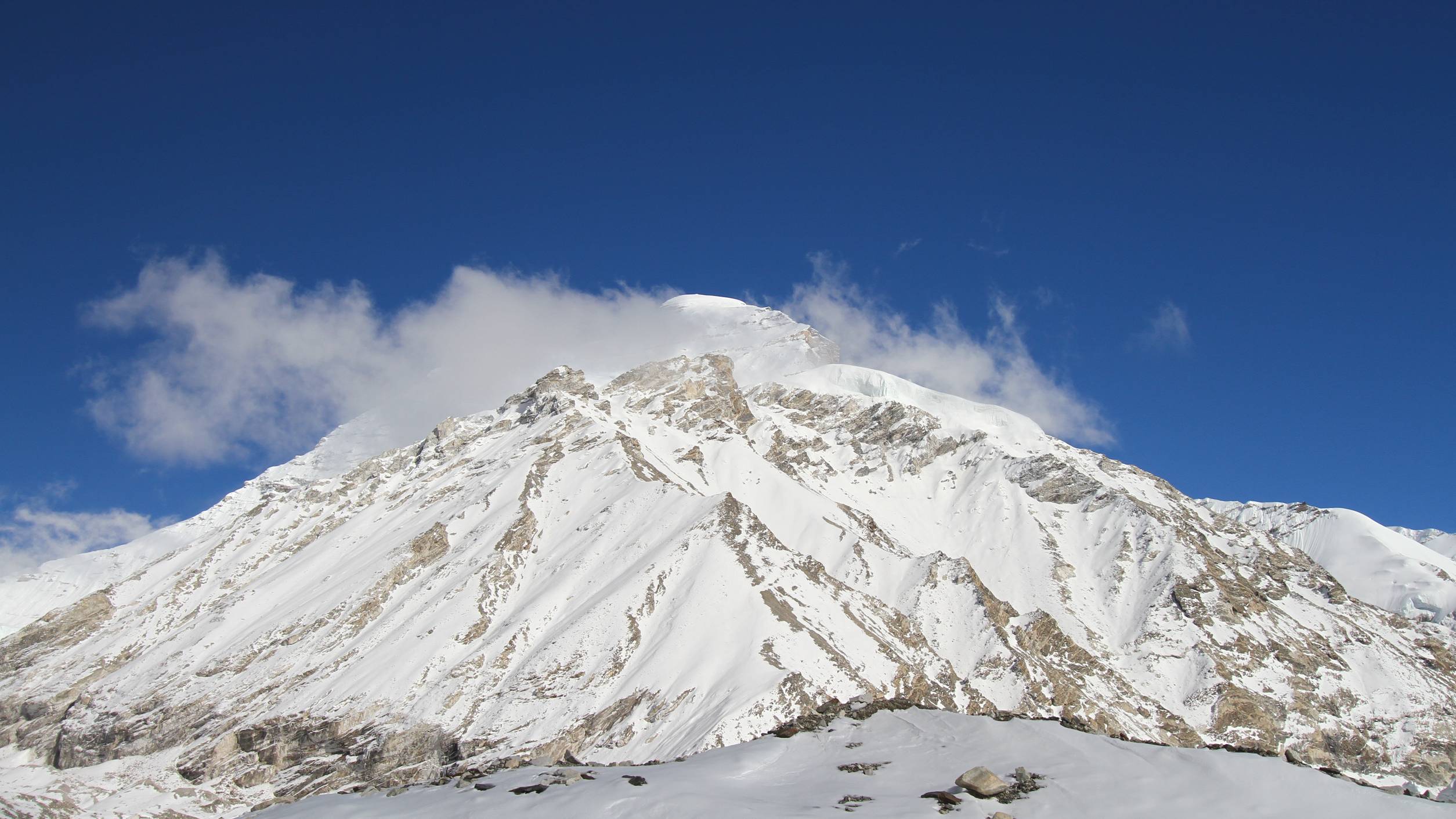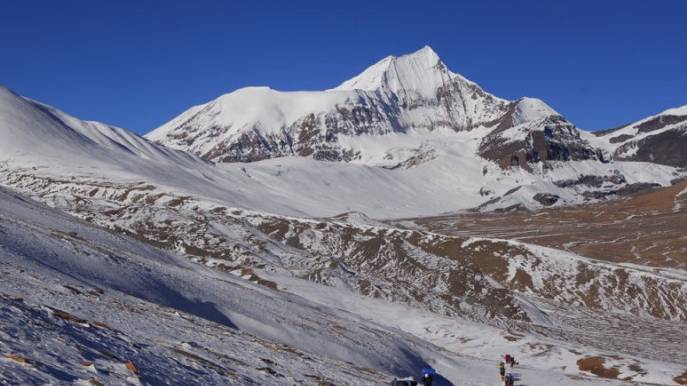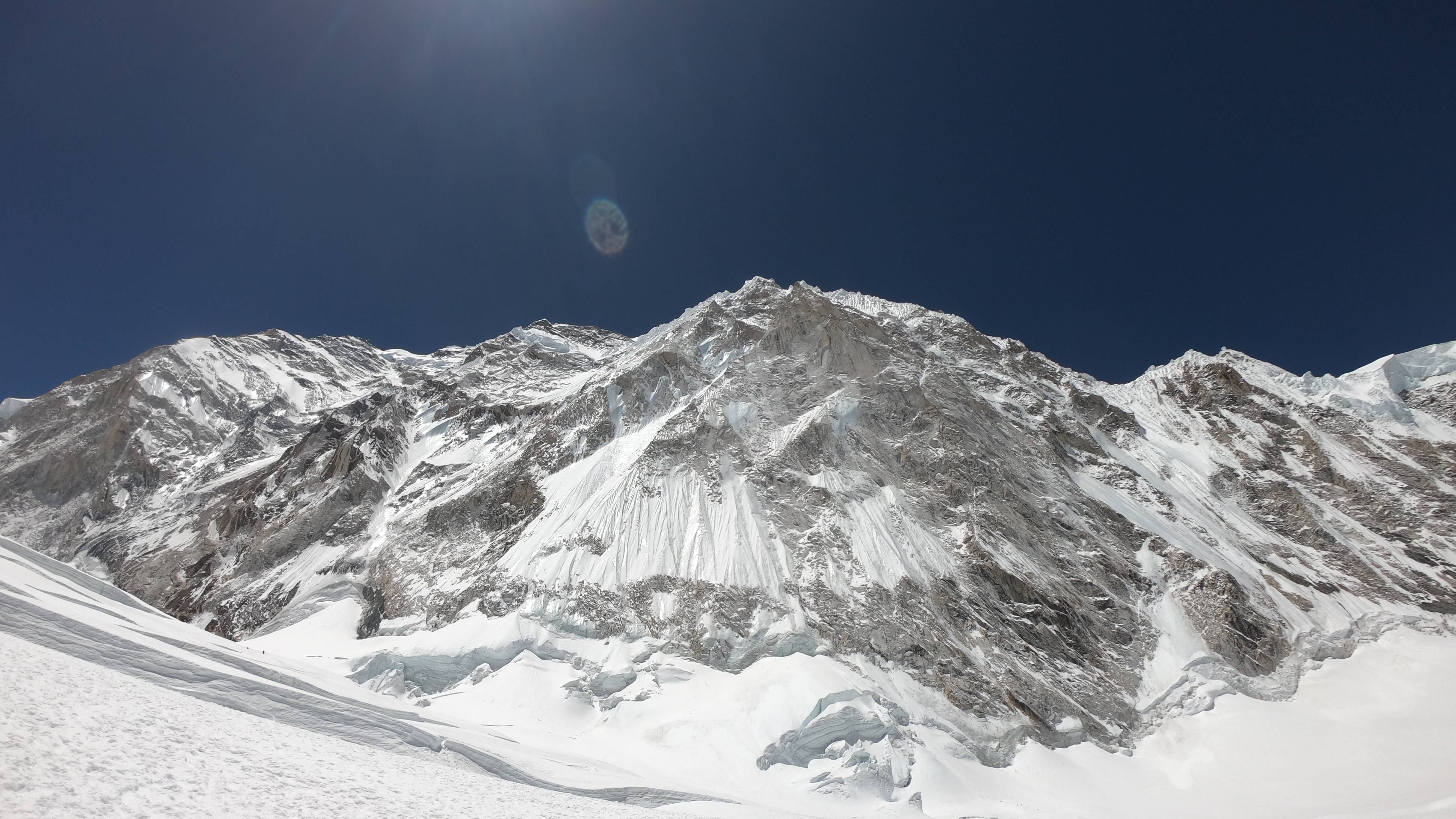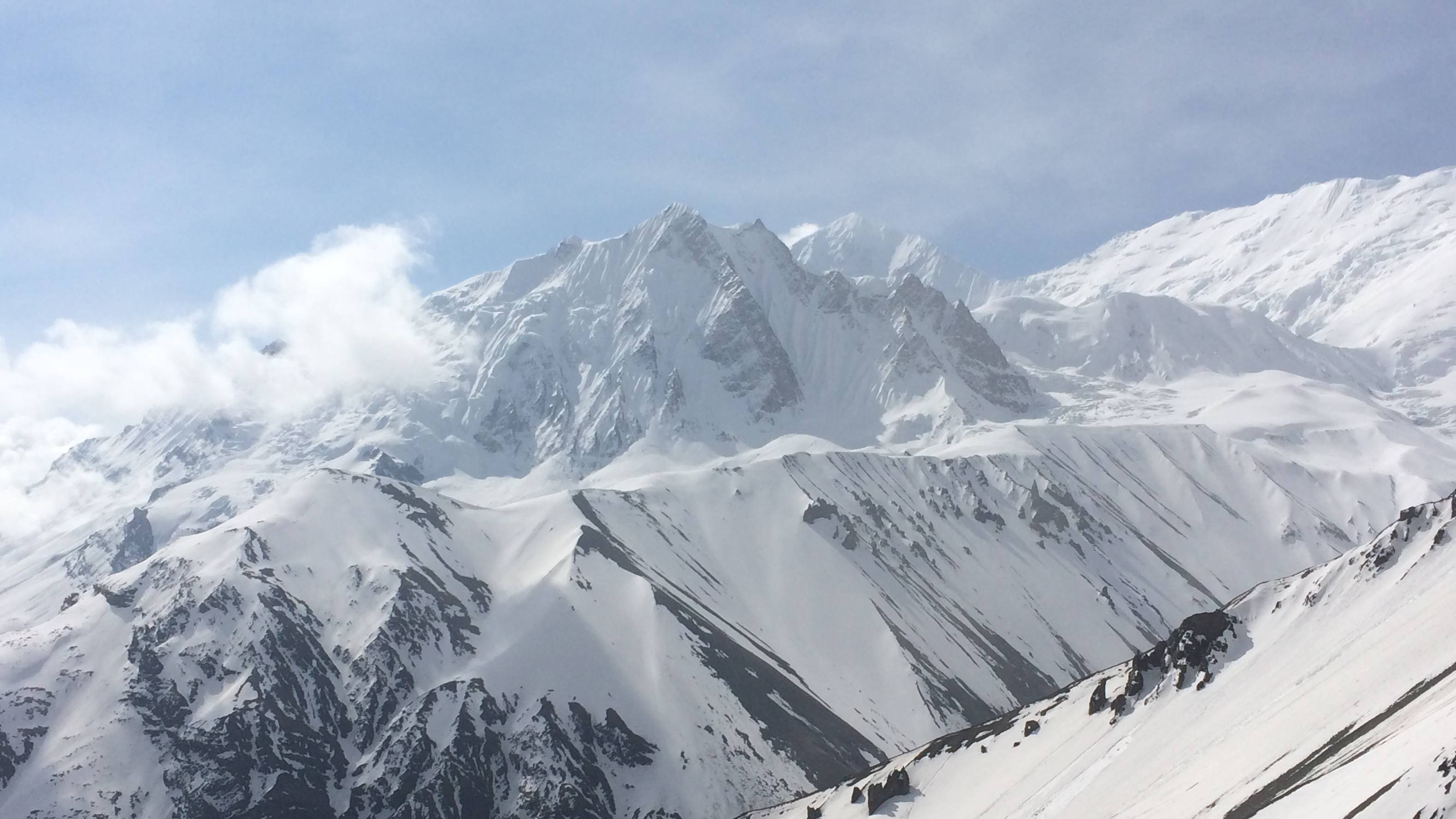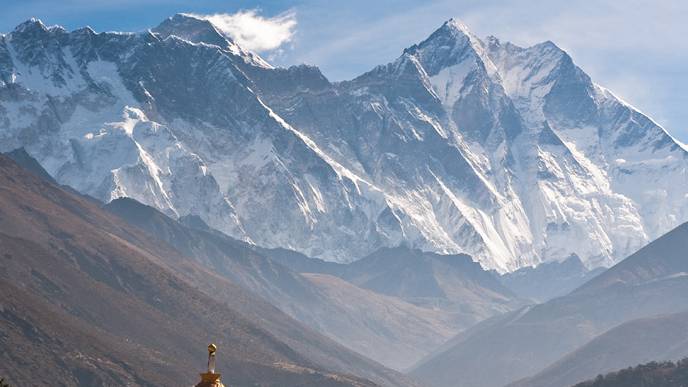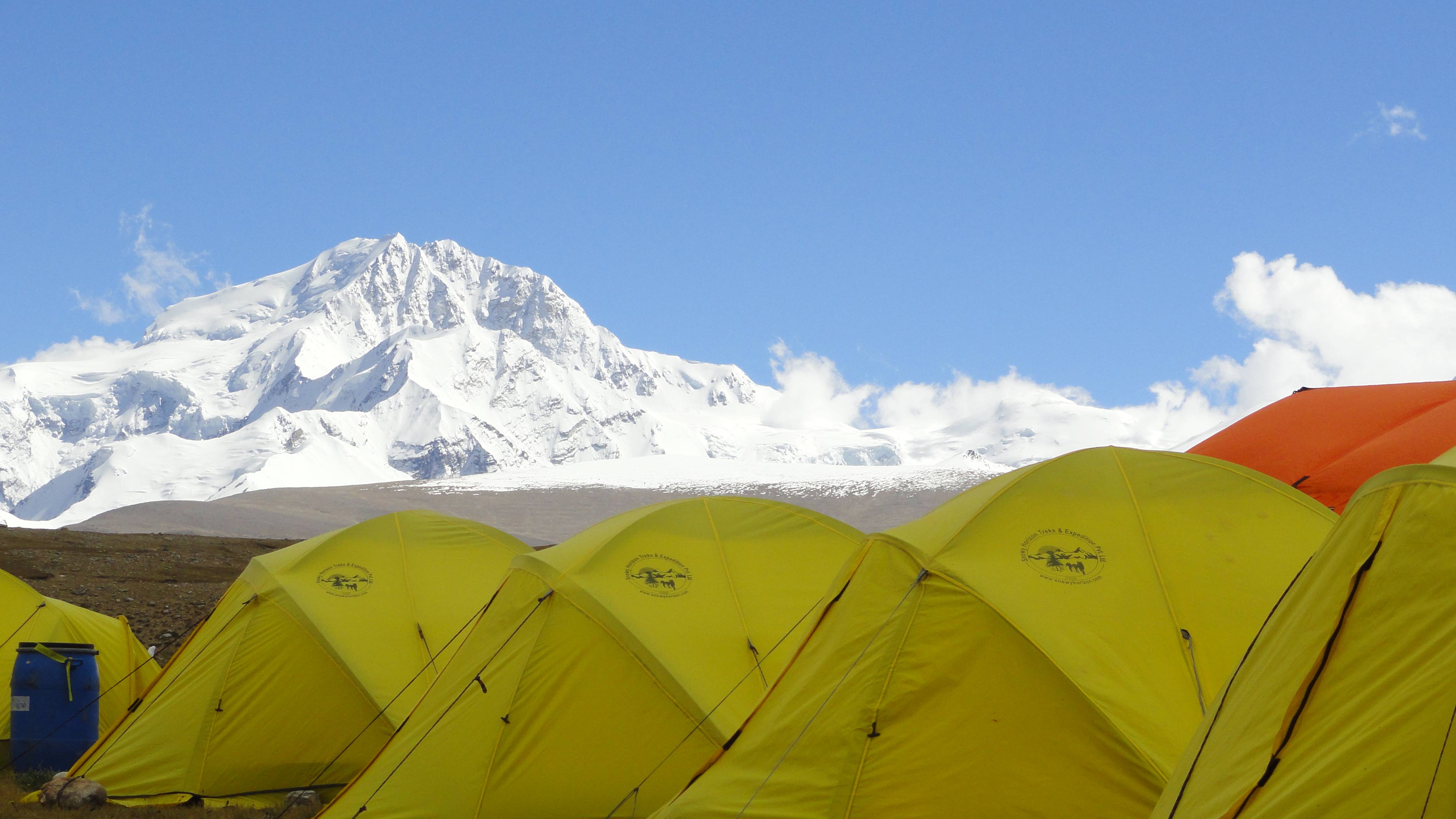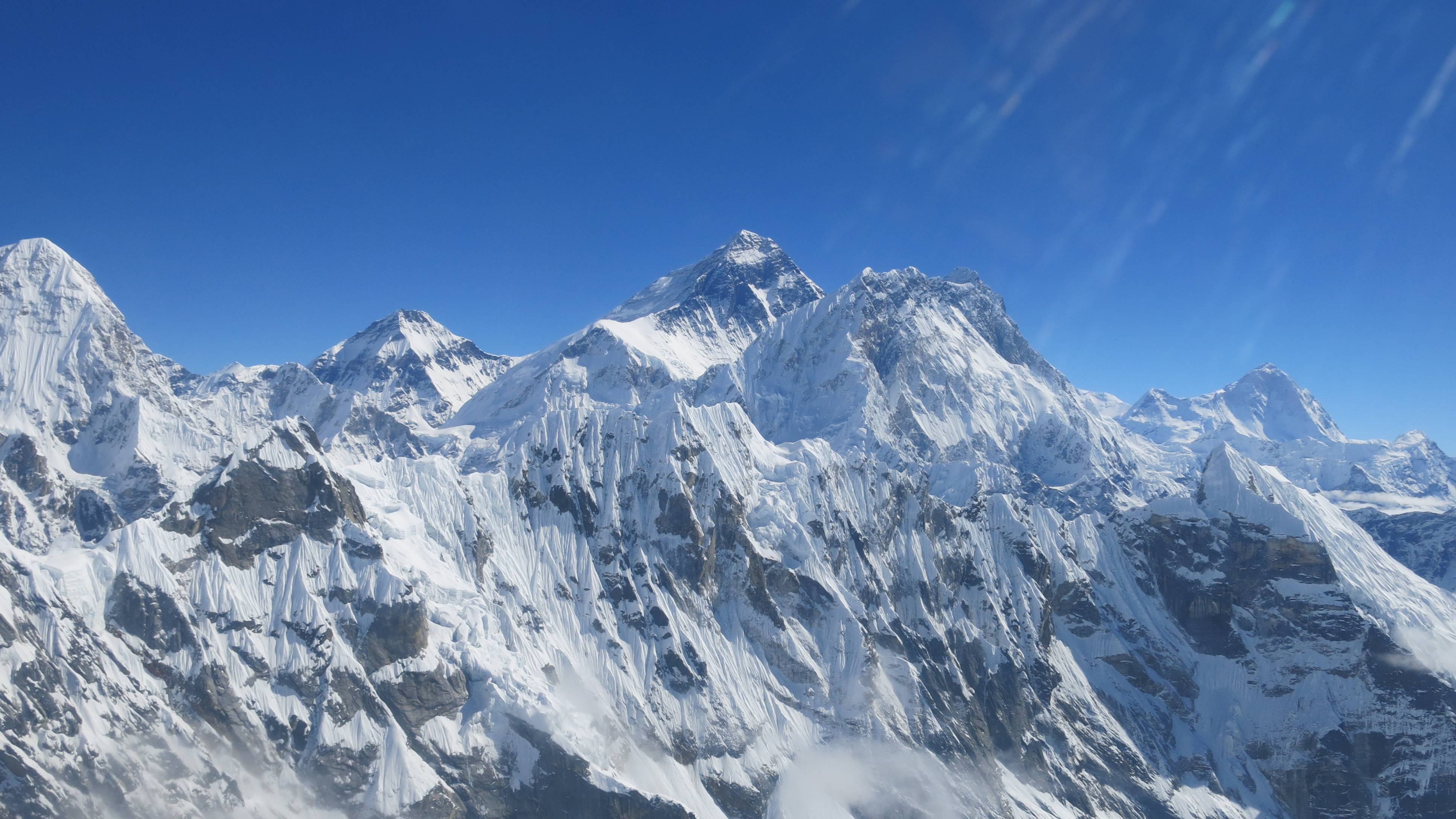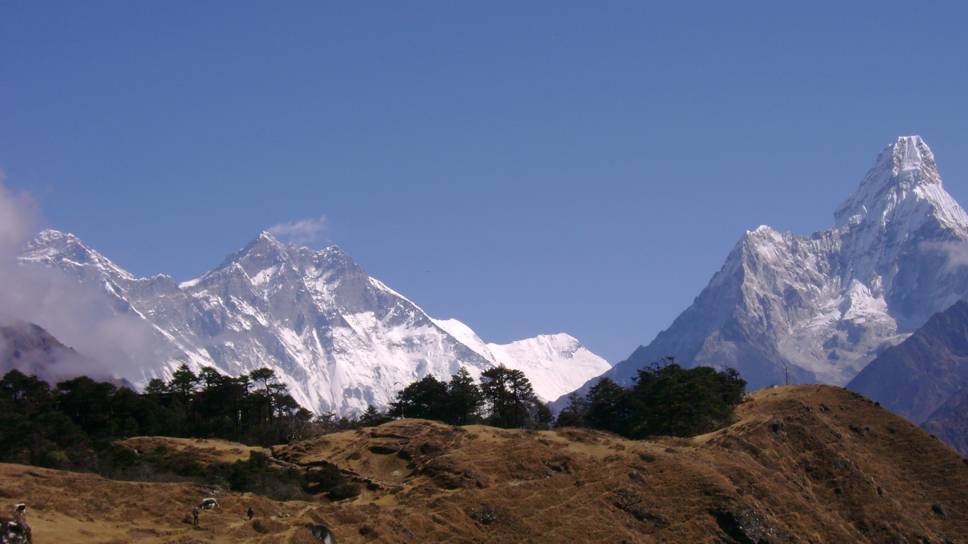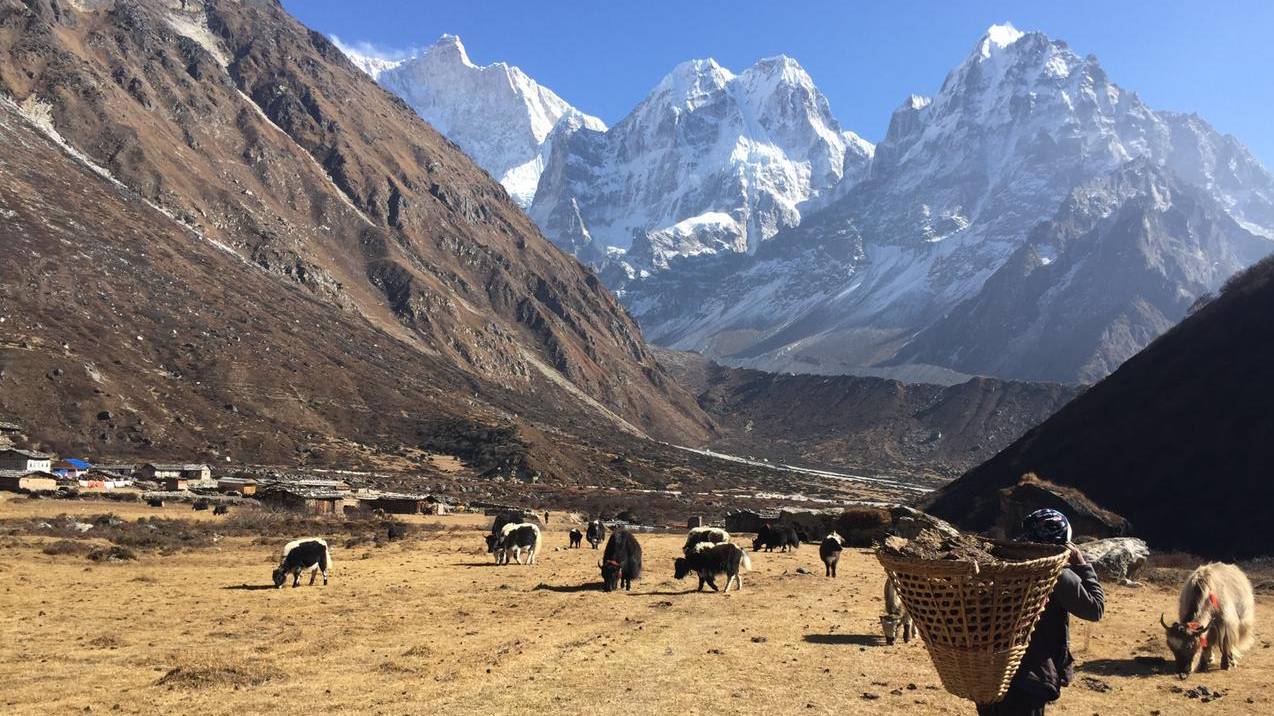Everest Expedition (North Face)
Overview
“Experience, explore and enjoy the highest summit (8848m) on Earth, the Mt. Everest (Qomolangma) in association with Snowy Horizon Expeditions through the easy path from Tibet, the North Face Route via North Ridge.”
Mt. Everest called The Sagarmatha(the forehead of the sky) in Nepali and Qomolangma in Tibetan is the highest summit on Earth with an altitude of 8848.86m and thus is known as the roof of the world. The Jewels of Asia Mt. Everest has its two major faces South and North. The South face of the most popular mountain lies in Nepal whereas the North face lies in China’s autonomous state Tibet. History says that in 1715, China surveyed the mountain for the first time while they were mapping Chinese territory and depicted it as Mount Qomolangma.
However, Mt. Everest was first officially measured in 1856 during the Great Trigonometry Survey of the British Indian Government and was named as Peak XV certified with a height of 8840m. Sir George Everest, the General of British India during the survey period was the major surveyor in 1856. Hence to honor him the name of this highest peak was chosen as Mt. Everest. During the period, Tibet and Nepal were closed to foreigners, so it is reasonable to assume that local names of the mountain were unknown which made the name Mt. Everest, popular in the world.
Many people in the world credit the discovery of the peak and its height to Sir George Everest as above. However, in the Indian Journal of History of Science, 50.4 (2015) 642-645 named “Trigonometrical Survey of India and Naming of Peak XV as Mt. Everest” says Radhanath Sikdar, an Indian native, and Andrew Waugh, the subsequent Surveyor-General, deserve the true recognition. The paper will explore the old materials to give more accurate details on the discovery of Mt. Everest. Most of the data was gathered from the book EVEREST the Man and the Mountain written by J. R. Smith.
Due to the highest elevation and summit point on earth, the mountain has now become a lifetime dream for most mountaineers. There are two commercial routes on Mt. Everest Expedition. One is the South Face route via Southeast Ridge from Nepal and the other is the North Face route via North Ridge from Tibet. The royalty of this Expedition from the Tibet side (North Face) is now higher than in Nepal. Before it was significantly lower. Tibet is now charging a minimum of US$ 15800 per climber for a minimum of 4 members required on a team that covers the border to BC and BC to border transportation with jeep/minibus and BB Plan accommodations en-route before the campsite and limited yaks to carry the logistics up to Advance Base Camp. Whereas, Nepal is charging only US$ 11,000 per climbing member as the royalty fee for the same. However, there are other hidden charges on formalities for climbing Sherpa and base camp staff insurance covering the search and rescue with helicopters and the government-appointed liaison officer for each expedition team.
The climbers who can manage the huge funding for Mt. Everest Expedition personally or through business sponsors are eligible to take part since the climbing experience and techniques are not the major requisitions. In the project of Mt. Everest Expedition North Face in Tibet, a professional mountain guide with a team of climbing Sherpa can take the climbing member individually to the summit for a substantial fee added to the package.
Snowy Horizon Treks & Expedition is delighted to offer world-class services in the Everest Expedition in Tibet in Base Camp, Advance Base Camp and the high Camps like C1, C2 and C3. Our service covers arrivals, departures and hotel accommodations in Kathmandu, transfer to Kerung border (Rashuwa Gadhi of Nepal)of Tibet, drive to and from Mt. Everest BC and all Tibet side hotel accommodations on BB Plan in Kerung and Old Tingri. All 3 meals a day with unlimited hot and cold drinks are prepared and served by our expedition professional cook and full logistics support of camping in BC and ABC as mentioned on the cost information index.
For Mt. Everest Expedition in North face, the climbing guides of team Snowy Horizon are highly skilled, qualified and time-to-time reviewed and recognized through their training and experiences in this profession and are reasonably paid by us. To these climbing guides in our Everest Expedition, we are going to put on a rope. This is a serious climb with serious consequences should things go wrong. So, one of the most things we have to keep in mind while operating the Mt. Everest Expedition is anticipation. We are ready and get set for welcoming you in our fixed departures each year for Mt. Everest North Face Expedition from Tibet. You can join us for the required hassle-free hospitality and a high rate of expectation for summit success with the prime attention to your safety.
Approaches to ABC from North (Tibet):
North Base Camp is approached from the Tingri Plain through Rongbuk (4880m), the location of the famous Buddhist Monastery. Two days trek to Everest North Base Camp (6500m) begins at the Chinese Base Camp (5100m) with intermediate acclimatization in Middle Camp (6200m). Typically it takes 3 days to drive to Tingri (4300m) from Kathmandu with acclimatization stops in Kerung (2850m). It takes typically 10 days to reach ABC from Kathmandu according to the Itinerary index.
Climbing Routes of North Side:
- On the north side of Everest in Tibet, Northeast Ridge, the North Face route, begins with the trek to the Rongbuk Glacier accessible from Tingri by jeep/minibus to the Chinese Base camp (5,100m), which is located on a gravel plain just below the glacier.
- There is an intermediate Middle Camp before reaching the Advance Base Camp. To reach Middle Camp climbers ascend the medial moraine of the east Rongbuk Glacier up to the base of Changtse (6,200 m).
- The Advanced Base Camp (6500m) is situated below the North Col and there are 3 camps above before the final summit push. The route is in a way more technical because there is more exposed rock and the weather is much more severe than on the Nepalese side as it is exposed to winds all the time.
- Camp 1 is located on the North Col, where climbers face a long and monotonous ascend of the glacier to the foot of the Col. Fixed ropes are used to reach the North Col (7,010m). From the North Col, there is ascending along the rocky north ridge to Camp 2 (7,775m).
- From Camp 2 the route crosses the North Face in a diagonal climb to the base of the Yellow Band reaching the site of Camp 3 (8,230m). Camp 3 is the last camp from where the final summit push is staged.
- There are three famous Steps after camp 3. There is a treacherous traverse from the base of the First Step (8,500m) to the crux of the climb, the second step (8,580m). This includes a climbing aid called the "Chinese ladder", a metal ladder placed semi-permanently in 1975 by a party of Chinese climbers and used by virtually all climbers on the route. The third step is inconsequential (8,690m) followed by a snow slope of 50 degrees and the final summit ridge to the summit pyramid.
Day-to-Day Itinerary:
07 April: Day 01: Arrival at Kathmandu Airport & transfer to hotel (1350m).
08-11 April: Day 02-05: Rest, preparation, visa collection, assignment & briefing.
12 April: Day 06: Drive (8 Hrs.) to Kerung Town via Timure Immigration formality; hotel(BB Plan).
13 April: Day 07: Rest and Acclimatize day in Kerung (2850m), overnight hotel (BB Plan).
14 April: Day 08: Drive to Old Tingri (4390m); overnight hotel (BB Plan).
15 April: Day 09: Rest and acclimatization at Old Tingri; overnight hotel (BB Plan).
16 April: Day 10: Drive from Tingri to Rongbuk, Chinese Base Camp (5200m) four hours; Camp.
17-19 April: Day 11-13: Rest and acclimatization; prepare and arrange yaks for Advanced Base Camp (ABC).
20 April: Day 14: Trek from Rongbuk (CBC) to Middle Camp (MC-5700m-5 Hrs.); overnight in Camping.
21 April: Day 15: Trek to Advance Base Camp (ABC-6400m); prepare camp overnight camping.
22 April-26 May: Day 16-51: Climbing Period (summit period of Mt. Everest 8848.86m).
27 May: Day 52: Dismantling ABC; drive to Chinese BC; drive to Tingri, overnight hotel (BB Plan).
28 May: Day 53: Drive from Tingri to Kerung Town (7 Hrs.); hotel.
29 May: Day 54: Drive from Kerung to Kathmandu; overnight hotel (BB Plan).
30 May: Day 55: Rest and leisure day and shopping in Kathmandu.
31 May: Day 56: Final departure to your port of destination.
Full Board Service Cost : Please contact us by email or call us
Cost Include
- All arrival and departure transfer services in Kathmandu.
- 7 nights hotel accommodations in Kathmandu as per category on BB Plan.
- Tibet travel visas and permits (Royalty: US$ 15800 /4500 for members/Staffs).
- Official Liaison Officer for Mt. Everest Expedition from North Face, Tibet.
- Kathmandu-Rashuwa Gadhi (Kerung border)-Kathmandu 4/WD transfers.
- Kerung-Tingri -Chinese BC and VV transportation on SUV minibus on sharing.
- All accommodations (Maximum 6 Nights) on BB Plan in Kerung and Old Tingri.
- Full camping logistics set up in Chinese BC, Intermediate Camp, and Advance BC.
- Complete 3 meals a day (BLD) cooked by our expedition cook in CBC, MC, and ABC.
- 1:1 experienced climbing Sherpa guide and required BC staffs in sharing the plan.
- Cargo and duties clearing assistance service in Kerung border on both ways.
- Per full board member have 50 kg maximum personal baggage allowance for Yak.
- Gamow bag at base camp for emergency rescue purposes.
- Solar panels for light and battery charging to the required devices at ABC.
- Necessary member tents for ABC (1:1) and high camps (C1, C2, & C3; 2:1).
- All required icefall, environmental, and rope fixing charges where applicable.
- 5 Oxygen (4 Ltr.) bottles for climbing members and 2 for Sherpa.
- Mask & regulator set for each climbing member and supporting Sherpa.
- High-altitude food served by climbing Sherpa at C1, C2, and C3.
- Baggage allowance carrying by Yak up and down to ABC from CBC-50 Kg each.
- First Aid medical kits for the Group and the staffs at ABC.
- Satellite phone for emergency communication (uses charge: $ 5 per unit call).
- Necessary paper works, office service charges, and government taxes levied in Nepal.
- Complete pre-departure information and immigration assistance (if necessary).
- Farewell Dinner & Snowy Horizon Special Gifts.
Cost Exclude
- Lunch and dinner during your stay in Kathmandu and Tibet, except farewell dinner in Kathmandu and campsite meals in Tibet expedition).
- Items of personal nature like laundry, phone calls, and Internet use.
- Clothing, packing items, personal medical kit, personal trekking/climbing gear.
- Any extra services or products or offers or activities not mentioned in the itinerary.
- Any extra expenses arising out of various/unforeseen situations like natural calamities, landslides, political disturbances, strikes, changes in Government regulations, etc.
- Any additional staff (s) especially required by the climbing member.
- Rescue, repatriation, medicines, medical tests, and hospitalization expenses.
- Medical-travel insurance and emergency rescue evacuation if required.
- Airfare of international and domestic flights other than specified.
- Nepal entry or re-entry visa fee (Visa issuance is easy at the arrival borders).
- Nepal custom duty fees for import of expedition goods if required.
- Emergency/rescue/early Jeep cost (US$ 1700 approximately per Jeep).
- Summit bonus to the personal climbing Sherpa
(Beginning from a minimum of US$ 1800 per summit per Sherpa).
- Tips to base camp staffs.
(Per climbing member beginning from a minimum of US$ 300.00 in total for all)
- Any other item not mentioned in “The Service Package Excludes” Section.
Notes
- Cost defers on Hotel Category for Hotels in Kathmandu.
- The itinerary is changeable and modifiable as per the needs and time frame of the clients.
- The cost will be re-calculated if the itinerary is changed or modified.
- Additional activities may be added as per request with nominal additional cost.
- For any kind of changes please contact us by email or call us.
- Grade: Mountaineering
- Elevation: 8,848.86m (29,029ft)
- Location: Nepal/Tibet border
- Coordinates: 27°59′17″ N 86°55′31″ E
- First Ascent: Edmund Hillary (NZ), Tenzing Norgay (Nepal), May 29, 1953
- Season: Late spring and autumn
- Duration: 56 days (typically)
- Group Size: 02-15 person per Group

